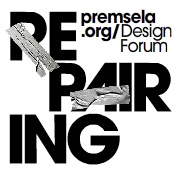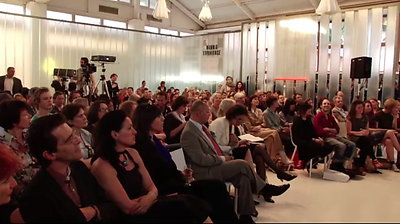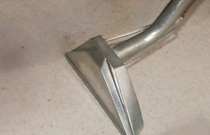report
report
Premsela Design Forum on Repairing
Each year during Milan Design Week, Premsela, Dutch Platform for Design and Fashion, puts on a presentation or debate. At this year’s edition Platform21 = Repairing and th Repair Manifesto offered a rich subject for discussion.
Led by moderator Marco Bevolo, speakers Joanna van der Zanden (artistic director of Platform 21), Corinne Poux-Bernard (director of innovation for Hermès) and designers Piet Hein Eek and Satyendra Pakhalé exchanged ideas on the usefulness, necessity and significance of repair in the contemporary design practice.
Watch the movie here. Prefer to read what they said? Below the movie you can read the report Premsela made of the conversation.
Report: Premsela Design Forum, Milan, 2009
“If you look at the economic crisis as part of a mentality, then repairing could be part of a change in mentality.” (Joanna van der Zanden, Platform21)
Cultural aspects
At Premsela’s Design Forum, it became apparent that business economic decisions, cultural aspects and traditions as well as personal needs play an important role in the choice between recycling and repairing goods. In his home country of India, according to Satyendra Pakhalé, repair is synonymous with improving and personalising products. Items don’t even need to be broken to be repaired. This process gives rise to products customised to individuals’ needs. Today, the challenge is to tailor complex industries, such as electronics, to social systems.
“Repair should be part of product design,” Pakhalé said. We should find a better way of using objects, but this is impossible unless we find a new way of communicating and take advantage of available networks. Pakhalé also said people should be more careful with their possessions. If a CD cost €50, we wouldn't be so quick to make a mistake while burning it and throw it away. In countries where people can’t afford large numbers of certain products, they treat buying things with more respect.
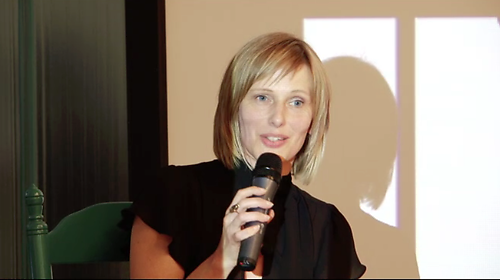 Joanna van der Zanden
Joanna van der Zanden
Joanna van der Zanden
Values versus environment
According to Piet Hein Eek, an imbalance in the value system is what causes people to continue to feel comfortable in today's throwaway society. He said he believed most discussions were part of the solution. Some problems have become so advanced that they are hardly solvable any more, and this is largely true of the discussion around sustainability, Eek said.
If we have the option of repairing things, we will, but that decision depends largely on the price tag, he argued. Our society is still dominated by the belief that success means earning as much money as possible in the least amount of time. So labour is expensive, while products are relatively cheap. In addition, we haven't yet exhausted our raw materials, and this, too, lets us allow ourselves to throw things away.
We need to adjust the balance with respect to life, work and natural resources, Eek said. The central question is: “What is wealth?” In ten years, will we still be spending an hour every day in the car on the way to work? There will probably still be enough oil, but is spending that much time away from your family every day and polluting the environment at the same time really worth it? We must readjust our values to our environment, Eek argued.
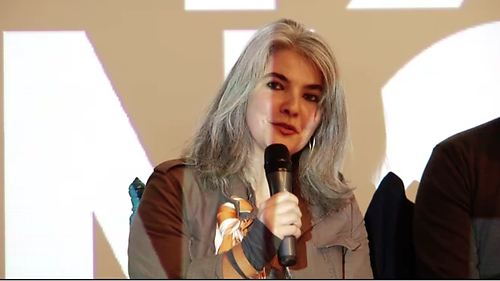 Corinne Poux-Bernard
Corinne Poux-Bernard
Corinne Poux-Bernard
Personal story
Corinne Poux-Bernard said she believed sustainability largely had to do with user behaviour. Emotional and personal values play an important part in the decision of whether or not to repair something. For example, the lifespan of leather depends a lot on how the owner treats the material. Some Hermès products last for three generations, because their owners are careful with them and willing to pay for needed repairs. A product that is cherished tells a personal story, Poux-Bernard said. Marks left by the owner, damage, and mended parts bring back memories.
Piet Hein Eek replied that repair was the basis of his work and life. He repairs almost everything, he said, and wears his clothes until they fall apart. But there’s no single reason why he does so, except that the things he loves make him happy.
“If something is worth something, you repair it – either if it’s emotionally or practically worth something,” Eek said. “So if you pay €10,000 for a table and there’s damage of €100, it’s worth repairing. If the table was only €90 and the damage is €100, it’s not worth repairing.”
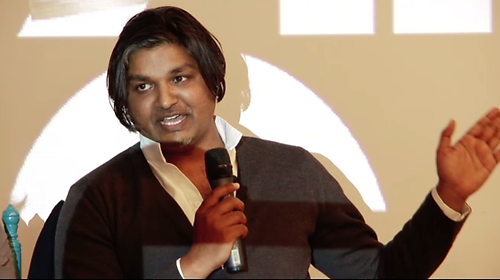 Satyendra Pakhalé
Satyendra Pakhalé
Satyendra Pakhalé
Change in mentality
Joanna van der Zanden decisively rejected Piet Hein Eek’s position on the economic reason at the basis of the decision to repair, arguing that this was limiting. If having something fixed by a third party is too expensive, we can do it ourselves. If we don't know how, we can consult specialists, or do research, for example on the Internet. So it would help if designers supplied their products not just with user manuals but also with repair instructions. These could also contain extra tips to stimulate people’s own creativity.
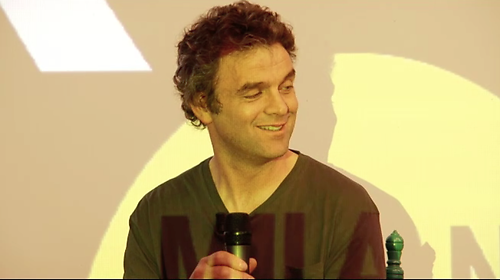 Piet Heen Eek
Piet Heen Eek
Piet Hein Eek
In response, Piet Hein Eek stressed that emotional value had to be present for someone to invest a lot of time and energy in repairing. Some products are merely things you use, and have no further meaning for you, he said. Others are impossible to repair, or repairing them is bad for the environment. In that case, recycling is better. The discussion is not a black-and-white one, he said, but a question of weighing things up on the basis of various factors. Eek said he still believed people could change if there was a reason to.
Joanna van der Zanden replied that “every reason you can give for repair, for us, is good enough,” whether emotional or practical. She said she didn't differentiate between underlying ideas: motivation was the deciding factor. “If you look at the economic crisis as part of a mentality, then repairing could be part of a change in mentality,” Van der Zanden said.
